My reading life has been busy of late, so for this month’s Quick Lit, I’m dividing my reviews across two posts—starting today, with reviews of the nonfiction titles I’ve read lately. There are a number of phenomenal books on this list. Let’s get to ’em.
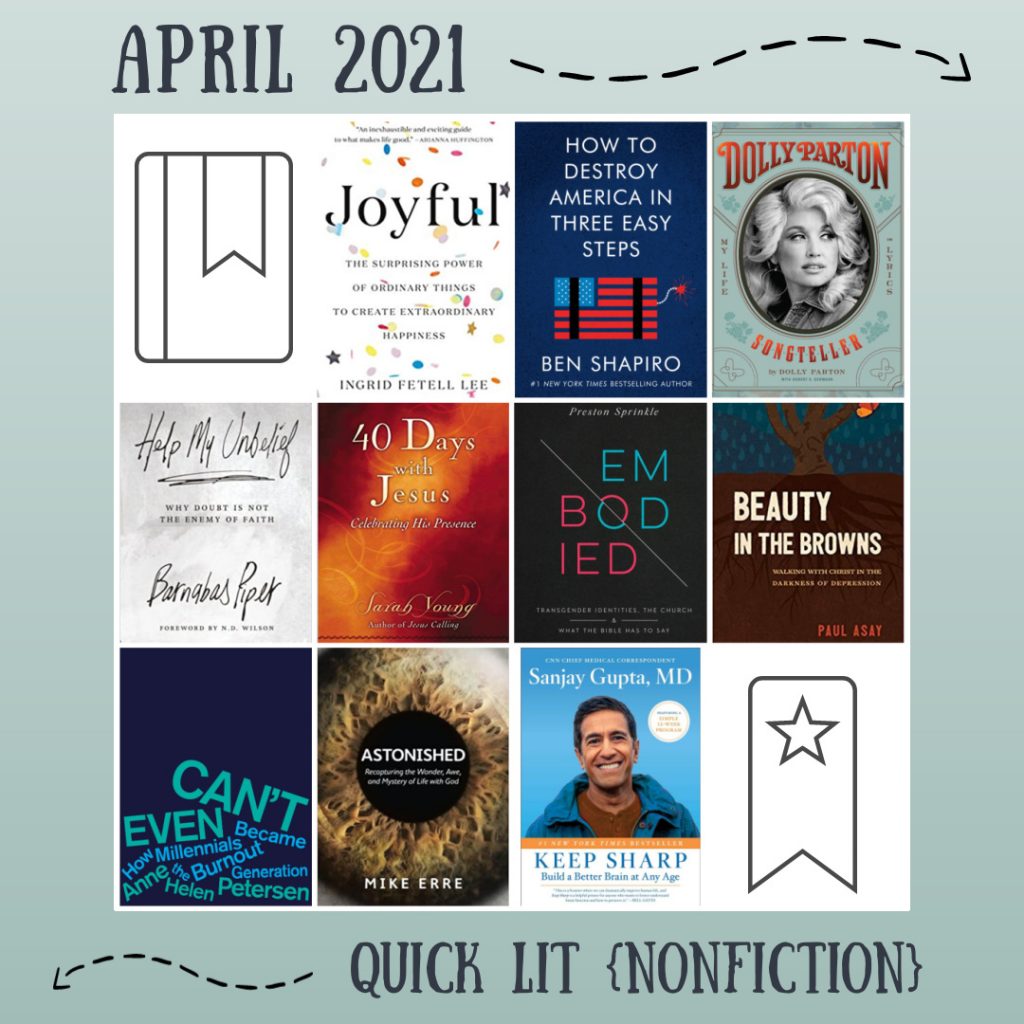
Beauty in the Browns: Walking with Christ in the Darkness of Depression, by Paul Asay: In February, I heard Paul Asay share about his battle with depression on the Focus on the Family podcast. I was in the depths of my own most recent bout with . . . well, I wasn’t sure with WHAT . . . and hearing Paul’s story made me feel so incredibly seen. Though his experience did not mirror mine exactly, his emotions and symptoms were eerily similar to my own. I was encouraged by his brief story of overcoming his depression and eager to learn more through his book.
Beauty in the Browns begins with a brief overview of depression: what it is, what it isn’t, and why its sufferers must fight to move on. Asay reflects on his own childhood and the circumstances that led to chronic depression in his teen years and again in middle age. He then walks readers through the steps he took to overcome his depression and offers strategies for fellow sufferers who hope to do the same. Finally, he shares tenderly about his son’s journey with depression and offers encouragement for those whose loved ones struggle in this area.
I so appreciated this book. Asay’s story is relatable and told with candor, compassion, and surprising amounts of humor. He does not downplay the pain or challenges of depression but offers hope, truth, and motivation from the depths of darkness. His strategies for healing were not new to me, but he packages them in a way I found accessible and useful. (Knowing his own story was helpful, as his experience reveals the efficacy of these tips.) I especially loved Asay’s encouragement to turn to Scripture and to God, which he does while also acknowledging that depression is much more layered and complicated than has often been suggested by many Christians. (In other words, he doesn’t simply suggest that depression can be prayed away.)
The book’s conclusion took my breath away. I love that Paul Asay sees the gifts of depression, a perspective I choose to embrace too. Asay has found the beauty and purpose in his suffering, and in sharing this he helps fellow sufferers to do the same.
My Rating: 4.5 Stars (Rounded up to 5 Stars on Goodreads).
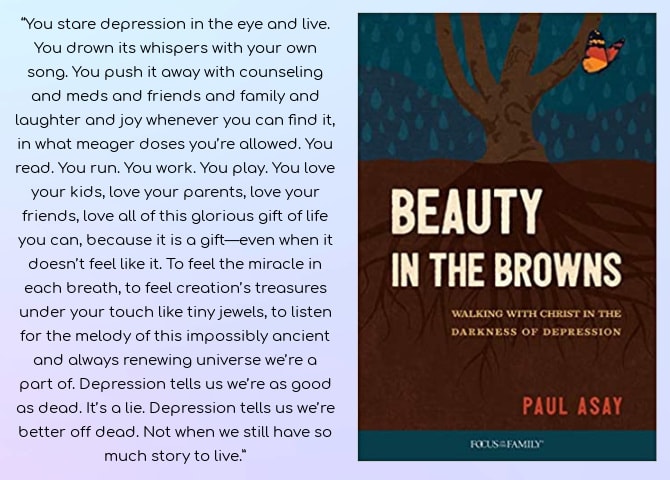
Astonished: Recapturing the Wonder, Awe, and Mystery of Life with God, by Mike Erre: As part of seeking Wonder in 2021, I’m reading a new book on the topic each season, and this was my spring selection. Written by one of my favorite teaching pastors, Astonished is insightful and thought-provoking and succeeded in its role of reawakening a sense of awe in our Creator. I’ll be sharing a full review, plus the book’s implications for my year, in a future post.
My Rating: 5 Stars.
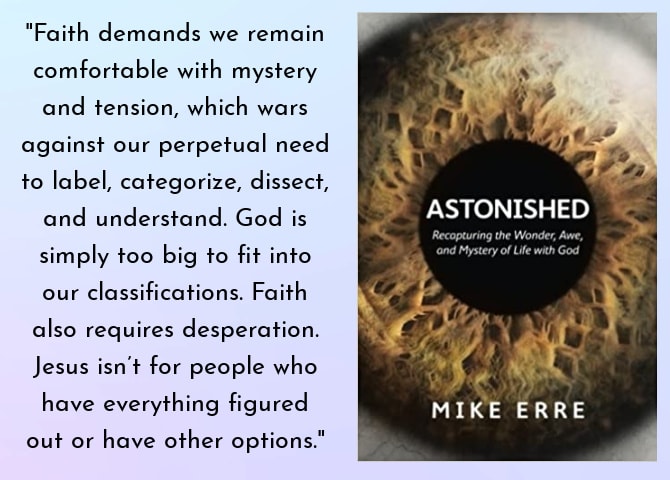
Keep Sharp: Build a Better Brain at Any Age, by Sanjay Gupta: I am familiar with Sanjay Gupta from his reporting on the Coronavirus podcast. Dr. Gupta was a neurosurgeon before becoming CNN’s chief medical correspondent, and neuroscience and brain health continue to be his areas of expertise. In Keep Sharp, Dr. Gupta explores the concepts of heightening and protecting brain function and maintaining cognitive health into old age.
The book begins with an in-depth discussion of the brain, its functions, and what happens when our brains begin to decline. Dr. Gupta then spends time examining five pillars for building brain health (exercise, learning, sleep, nutrition, and socialization) and concludes with a section on the signs, symptoms, and treatment of people with brain disease, particularly Alzheimer’s.
This book is written in a conversational, engaging style that makes the challenging subject of neuroscience not just accessible, but enjoyable. Dr. Gupta debunks several myths surrounding brain health, resulting in quite a few surprises for me (most notably the connection between Alzheimer’s and Type II Diabetes, and the proven benefits of exercise for brain health over ALL other types of personal care). He also layers the science and research portions of the book with plenty of fascinating factoids about the brain. I was pretty shocked by how little we still know about the brain, and by the fact that many of the ideas surrounding brain protection are still just conjecture. I appreciated Dr. Gupta’s clarity on which practices are backed by science and which claims still need to be studied further.
Many of the strategies offered in the book fall under the umbrella of common sense protocol for general health, which I found somewhat reassuring (taking care of your brain isn’t too much more difficult than simply taking care of your health) if slightly overwhelming (because getting the right amounts of food, sleep, exercise, and social engagement is SO much easier said than done). Still, I like that this book offers some hope for those desiring to maintain cognitive health. Keep Sharp has definitely changed the way I think about my brain and how I will move forward in caring for it.
My Rating: 4 Stars.
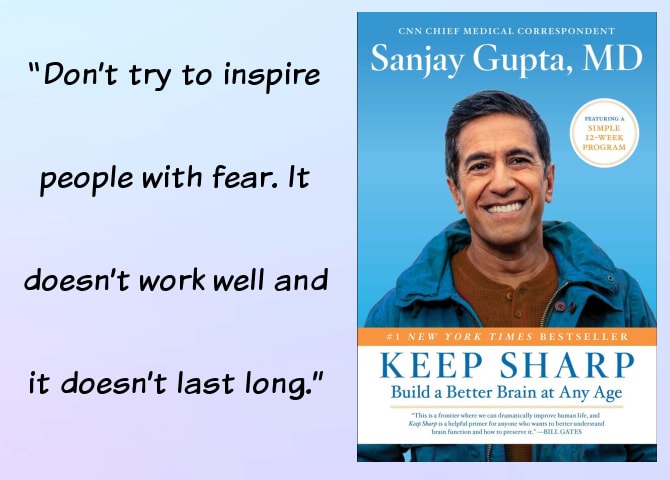
Joyful: The Surprising Power of Ordinary Things to Create Extraordinary Happiness, by Ingrid Fetell Lee: “Joy” was my word for 2020, and though that year is past (*sigh of relief*), I have continued to pursue joy into this year and was excited to see this book’s take on the subject. Whereas many authors and schools of thought focus on joy that can be found from inward sources, designer Ingrid Fetell Lee takes a different approach, shedding light on the ways that ordinary objects can bring joy.
Drawing on insights from neuroscience and psychology, and sharing her own stories and experiences, Lee unpacks ten aesthetics of joy (energy, abundance, freedom, harmony, play, surprise, transcendence, magic, celebration, and renewal), each of which reveals a distinct connection between the feeling of joy and the tangible qualities of the world around us. Lee highlights elements of design that tie into each aesthetic. For instance, energy is brought out by color and light, freedom is experienced through nature, transcendence can be found in elevation, and surprise is built into contrast and whimsy. Each chapter is filled with fascinating anecdotes and brilliant suggestions for incorporating joyful elements into our homes and surroundings.
I’ve never read a book quite like this and I found its premise and its ideas mesmerizing. The book is much more scientific/psychological than artistic (think Malcolm Gladwell, not Joanna Gaines), and I really liked that aspect. Lee is an engaging storyteller and a thoughtful teacher, helping her audience fully understand each new idea and leading us to some unexpected insights. I especially appreciated her thoughts on play and magic, both of which tie in well with THIS year’s word of Wonder.
Though not written from a faith perspective, I enjoyed thinking about how God has incorporated these elements into our world to give joy and fulfillment to us as His children. Lee’s ideas have me viewing my environments in some new ways and thinking about how practically to incorporate more JOY into our home.
My Rating: 4 Stars.
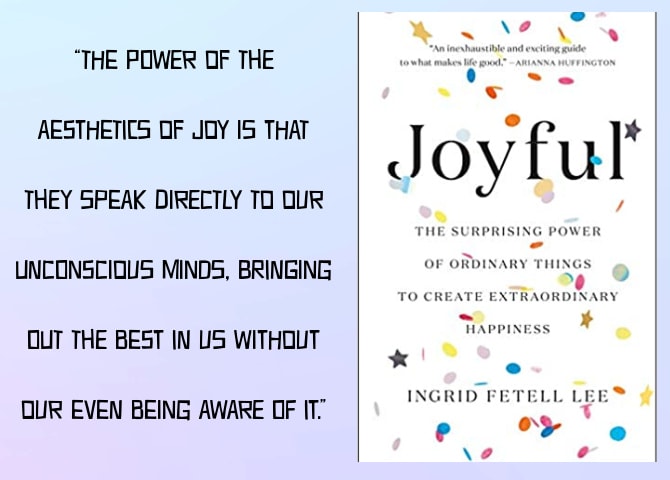
Dolly Parton, Songteller: My Life in Lyrics, by Dolly Parton: Dolly Parton is certainly having a moment, isn’t she? And as a lifelong fan of Dolly (both the woman and the music), I couldn’t be happier about her success and fame. I’ve read a handful of books about the artist, and in this one we hear from Dolly herself. The book is structured around Dolly’s music, with brief chapters dedicated to 175 of her songs. Dolly offers commentary on the lyrics themselves, the writing of each song, and the people and stories connected to each one. Because Dolly’s songwriting is so personal to her, we also learn a lot about her life (including her childhood and her years as a performer) and her perspective on everything from God to cultural trends and even her own popularity.
What an enjoyable little book this is! The audio is a lot of fun, with the chapters featuring snippets of each song followed by interview-style commentary from Dolly. The book feels more like a podcast or a conversation, so I can’t quite picture how this reading experience would translate to print form (though according to reviews, the hardcover contains several photographs which I obviously missed out on in the audiobook).
I was genuinely surprised by the stories behind many of these songs. Some have such tragic backstories and much more depth than I could have assumed, and others have almost no meaning at all and were just fun for Dolly to piece together. Dolly’s intuitive understanding of people and her ability to take on many different personas in her songwriting intrigued me, as did her knack for holding things like fame and viewpoints loosely and never taking herself too seriously (something this millennial found refreshing.)
I was impressed by Dolly’s optimism, her matter-of-fact perspective on life, and her straightforward way of discussing her faith, her sexuality, and harder topics like death, infidelity, and more. Dolly’s uncomplicated speech and lighthearted storytelling belie the wisdom and creative genius couched within each song, just as her brassy appearance and humble demeanor have continually distracted her critics from the compassionate, hard-working, perceptive woman behind the big hair and sequins.
I can’t imagine this book would appeal to anyone who isn’t a fan of Dolly Parton’s music, but for her devotees (of whom there are many), this book is a gem.
My Rating: 4 Stars.
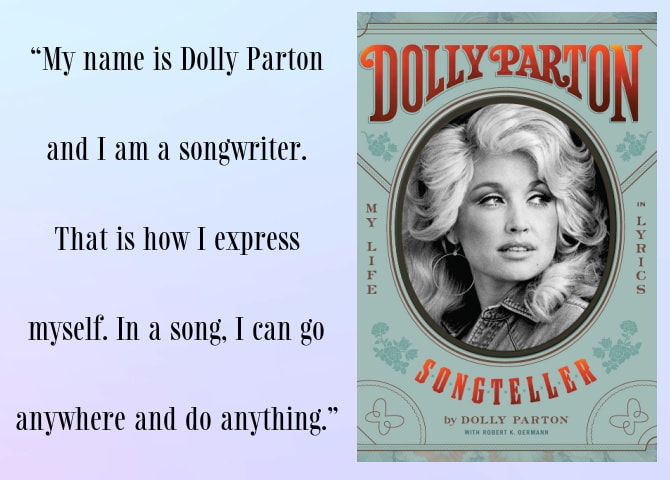
Can’t Even: How Millennials Became the Burnout Generation, by Helen Petersen: Burnt out. It’s a description many of us can relate to, even before COVID incinerated the coolest of cucumbers. In Can’t Even, BuzzFeed culture writer and former academic Anne Helen Petersen explores the phenomenon of burnout among Millennials (those of us born between 1981 and 1996)—the generation that, according to Peterson, suffers most acutely from this affliction. Petersen identifies several factors that play into millennial burnout, from high-pressure childhoods, oppressive school experiences, and shifting job trends that have upended the stability enjoyed by earlier generations, to technological advances, the mixed messages of feminism, and a decline of leisure time. Petersen’s own burnout experience is mixed with anecdotes from numerous other burnt out millennials whose stories are woven into expansive deep-dives into historical trends and cultural analysis.
The concepts in this book are frightening yet fascinating: I was mesmerized by Petersen’s explanations of how everything from labor laws to parenting paradigms to academic rigor have changed over time, and intrigued by her examination of the long-term effects elicited by these changes. Much of the economic analysis went over my head, and quite a bit of the discussion of value systems and cultural mores was not at all in line with my personal views, but I was still interested in Petersen’s hot takes on these topics. And I related with quite a bit of Petersen’s message, particularly the pressures we millennials place on ourselves to always be doing, striving, and achieving. Petersen’s emphasis on how our generation is too burnt out and overwhelmed to make necessary changes also resonated with me, particularly these days as I find myself in the early motherhood stage.
Can’t Even is an expanded take on a Buzzfeed article first published in 2019. Though I haven’t read the article, after finishing the book I think that a long-form article would have been a better fit for the content being offered. In her efforts to stretch the article into a complete book, Petersen crammed each chapter with as many quotes and anecdotes as possible, and while I appreciate her research, I was overwhelmed by the sheer volume of her sources and felt her message would have benefited from a streamlined approach. In addition to the excessive length, the book’s entitled tone didn’t sit well with me and simply adds fuel to the perception that millennials are self-absorbed and lazy—the very message Petersen is attempting to combat.
Our world is indeed experiencing burnout of epic proportions. Can’t Even failed to convince me that this is a problem exclusive to the millennial generation, as so many of burnout’s root causes affect EVERYONE in the twenty-first century, not just twenty- and thirty-somethings. That said, if burnout is an idea that concerns you and you are interested in understanding its systemic causes, Can’t Even provides some intriguing (if potentially flawed) answers. The book intentionally abstains from offering solutions, as the author firmly believes that the level of burnout we are experiencing has no quick fixes, but the book does provide validation for readers who feel burnt out, and solidarity for a generation desiring relief and change.
My Rating: 3.5 Stars (Rounded down to 3 stars on Goodreads).

Help My Unbelief: Why Doubt Is Not the Enemy of Faith, by Barnabas Piper: Many Christians are under the impression that they must always be confident in their faith, that genuine belief means a complete absence of questions or second-guessing, and that trust in God requires unequivocal conviction with no room for doubt. In Help My Unbelief, Barnabas Piper (son of pastor John Piper) does away with the false assumption that doubt is contrary to faith.
Piper begins by exploring the tension between our desire to believe and our lingering doubts, explaining that “belief is not a black-and-white endeavor built on simple truths. It is the exploration of a great mystery girded by great truths.” Piper highlights the qualities of a childlike faith by modeling how to respectfully question God (which allows for curiosity but not antagonism or skepticism), and he takes a look at the role our doubts have in our faith and how these doubts can actually become stepping stones to a richer relationship with God. Finally, he examines what belief in action will look like and HOW we come to genuinely believe. The book ends with two helpful appendices: the first is a guide to studying the Bible with the end-goal of getting to know God, and the second is an (excellent) annotated list of books for those wanting to study the subject further.
This book is phenomenal! It is well-reasoned and grounded in Scripture, with just enough of Piper’s personal story to emphasize his having wrestled with this topic, revealing him to be a relatable and trustworthy guide in this process of navigating doubt and faith. Piper does not sugarcoat important truths, and he avoids unhelpful clichés and superficial conclusions, but he is also sympathetic to those who have experienced deep fear, pain, and loneliness around these challenging subjects.
For those who have experienced tension in their faith, this book offers peaceful reassurance that lingering doubts are okay; and for those who have been afraid to approach God with questions, the book grants permission to “venture outside the fabricated safety of an untested faith.” Personally, belief isn’t something that has been difficult for me, but I appreciated Piper’s articulation of so much that I’ve known to be true about God’s character and His ability to handle our uncertainty. I frequently have conversations with people who are sitting in the uncomfortable tension of disbelief, and this book will now be my most-recommended resource for those looking to better understand the WHY and the HOW of belief.
My Rating: 5 Stars.
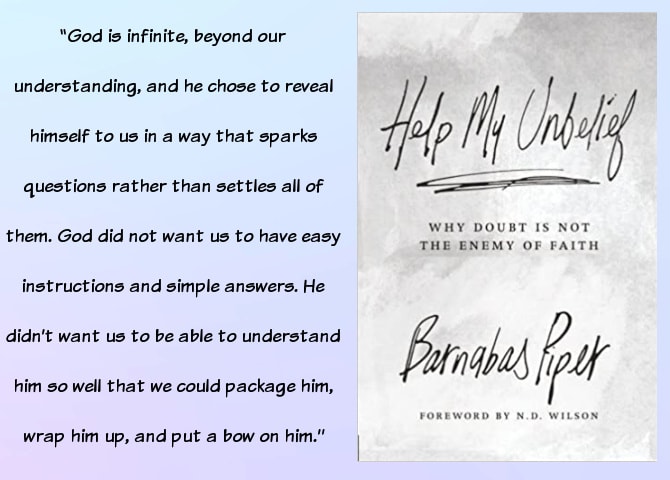
How to Destroy America in Three Easy Steps, by Ben Shapiro: In recent months, Ben Shapiro has become one of my most trusted sources for political news and commentary. His Libertarian views don’t always fully align with my own political leanings, and his sarcasm and abrasive style can sometimes be too much for me, but I appreciate his willingness to call out hypocrisy and unfair bias within politics and culture, and I value his common sense, no-nonsense approach as well as his ability to translate difficult concepts and unclear news items into concise, understandable ideas.
How to Destroy America in Three Easy Steps is a concise and helpful repackaging of many of the themes Shapiro regularly addresses in his daily show. In the book, Shapiro highlights the growing polarization in our nation and the growing divide between Disintegrationists (whose attacks on America’s history, philosophy, and culture undermine the values at our nation’s core) and Unionists (who firmly believe in 1) America’s philosophy of reason, equality, liberty, and limited government; 2) its culture of individual rights and social duties; and 3) its shared history). Shapiro emphasizes that these elements are what bind our nation together and that in order to keep America in tact, we must preserve Unionism and all that it stands for.
Though the message of this book is dire (at least for those of us who hope to see America preserved), it is an important read that offers a clear view of the most prominent threats to our country as we know it. Shapiro is unapologetic in his conservative views, but I found his arguments to be fair and representative of all sides of each issue. His philosophical analysis and historical context helped me get a handle on several ideologies and concerns I had considered but didn’t fully understand. His thoughts on cancel culture and the relationship between individual and collective rights were especially illuminating, as was his examination of the intentions and values driving the decisions of America’s founding fathers.
My Rating: 4 Stars.
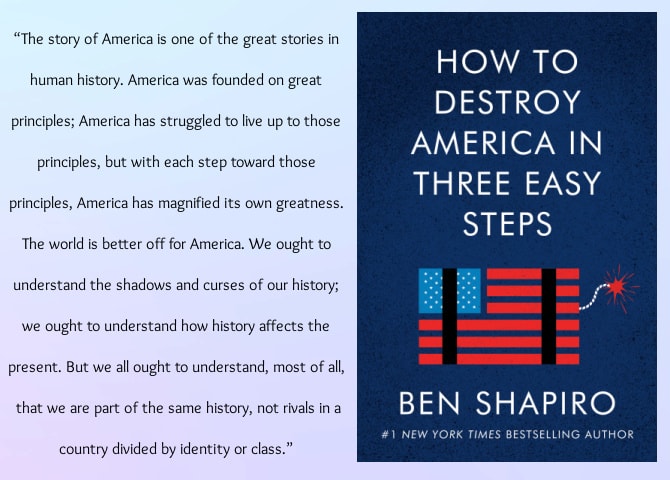
Embodied: Transgender Identities, the Church, and What the Bible Has to Say, by Preston Sprinkle: Issues of sexuality and gender have grown increasingly prominent in our cultural discussions in recent years, and transgender identity has been something I’ve struggled to understand, let alone address in any meaningful way. With this book, Dr. Preston Sprinkle—president of the Center for Faith, Sexuality, and Gender—tackles this topic that has been largely ignored or mishandled by the church, addressing related questions and concerns held by myself and many other believers.
Embodied offers a comprehensive look at the transgender conversation, examining the issue from spiritual, biological, and cultural perspectives. Sprinkle explains many confusing terms, sheds light on the concept of gender (separating cultural stereotypes from what biology and the Bible actually have to say about males and females), and even gets into the hotly contested debates surrounding intersex, physicality vs spirituality, and the nature of the soul. Finally, Sprinkle answers practical questions about pronoun use and the great bathroom debate, then helps Christians understand how we can come alongside the transgender community in loving yet truth-filled ways.
I found Embodied to be incredibly helpful, answering many of my logistical questions as well as a number of the deeper theological ones. I commend Sprinkle’s courage in taking on a controversial topic and, even more, I admire the dignity and compassion in his approach. Though himself a straight male, Sprinkle’s heart for the transgender community is evident in every story and anecdote and even the nuanced way he approaches Biblical truths that are likely quite difficult for members of this community to hear. His writing provides a model I would like to emulate in my own approach to transgender individuals.
My Rating: 4.5 Stars (Rounded down to 4 stars on Goodreads).
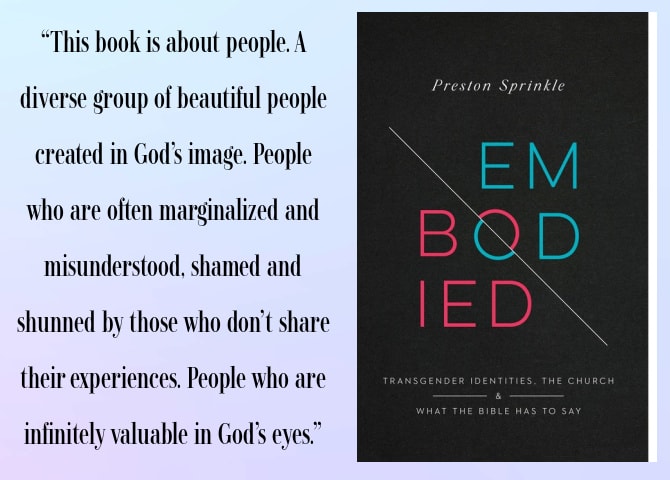
40 Days With Jesus: Celebrating His Presence, by Sarah Young: In looking for a Lenten devotional to prepare my heart for Easter, I turned to Sarah Young, whose Jesus Calling is one of the most impactful spiritual books I’ve read. 40 Days with Jesus is a selection of forty devotion taken from Young’s other books, so while it isn’t new material, the repackaging was well-suited for my purpose (though this certainly would be a relevant devotional outside of the Lenten season, as it isn’t specifically focused on the subject of Easter). Each of the forty devotions translates two or three passages from Scripture into modern language, written as if Jesus Himself is speaking these words from the page. Though some may take issue with this first-person approach, I found great comfort in these words and messages.
Themes of faith, love, and peace feature heavily in this selection of devotions and were exactly what my heart and soul needed for this season. The Lord spoke to me through Young’s words, encouraging me and drawing me nearer to Him each day.
My Rating: 5 Stars.
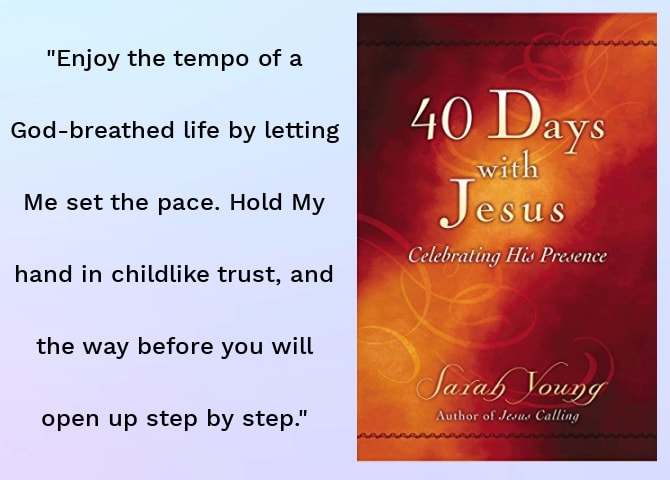
Stay tuned for next Monday’s post, when I will be sharing reviews of the six fiction books I’ve read in the past month.